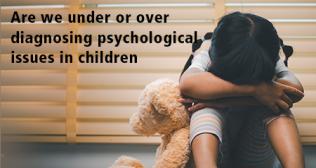
Behavioral Addiction In Mental Health
In recent evolving times, people have increasingly come to understand addiction to substances and their effects on a wide spectrum in our life. Subsequently, other than addictions particular to substances people may tend to form a dependence on various behaviors. A well-known form is gambling. Other less known forms are exercise, sexual activities, video games, shopping, internet use, tanning, etc. The core of any addiction lies in the ‘loss of control’ which has eventually become a defining feature of any addiction. These behaviors are well known to provide short-term pleasure along with an escape from emotional or physical distress.
5 Types of Behavioral Addiction
1. Gambling Disorder
Some people (0.4%–5.3% worldwide; National Opinion Research Center, 1999) develop patterns of behaviour that include excessive gambling to a point where they find themselves unable to curtail it according to their wishes. Preoccupation and persistent urges to engage in gambling may be experienced. Often reported is the need to gain back the losses (chasing) that have been incurred which leads to enduring more and more losses. Irritability or restlessness may result when not engaged in gambling despite the preoccupation which results not only affecting them but also people around them in terms of diminished intimacy with the family, marital problems, and debts affecting the overall quality of life.
2. Internet Gaming Disorder
Gaming as a disorder is characterized when the gaming behaviour disrupts the other activities of daily living and debilitates role functioning. It is common in male adolescents and is known to be an escape mechanism from real-life stressors and maladaptive coping for negative emotions. It may intrigue people as to what is it that makes people addicted to games? The answer lies in the randomness of the wins. These games are often devised to provide reinforcement at variable intervals (randomly determined rewards) which make the person consistently engage in it anticipating a win.
3. Internet Addiction
There appear to be at least three subtypes to it, excessive gaming-gambling, sexual preoccupations (cybersex), and socializing or social networking. Pathological use of the internet includes using the Internet for extended periods, isolating themselves from other forms of social contact, and focusing entirely on the Internet rather than broader life events. It has been seen that the pathological use of the internet is a dysfunctional coping strategy that affects relations at home and at school. It is also not uncommon for people to have physical problems (like being overweight) due to the impact of internet addiction. Therefore, any stressor is met with a flight to the virtual world where people might feel more worthy, accepted, and capable.
4. Shopping
It includes excessive and impulsive buying of products despite psychological, social, and financial consequences. Often these purchases are motivated to improve mood, cope with stress, or improve the social image, which makes it another dysfunctional strategy for coping with day-to-day problems. This tendency can be exploited by marketers by introducing add-ons, discounts, and free gifts on the expenditure of a certain amount. This is a result of flaws in the decision-making process, immediate gratification of needs, and overlooking of consequences and thus, it can be defined as a socially accepted behaviour taken to an extreme, making it difficult to draw a line as to when it gets pathological.
5. Food Addiction
One of the main characteristics that distinguish between overeating and food addiction is the presence of impulsivity which is the experience of pleasure. Another facet is that of compulsiveness that persists to avoid stress or tension. Thirdly, self-directedness is the capacity to act in accordance with personal goals. The three facets may act erratically leading to poor patterns of eating. Its relationship with eating disorders is palpable. The major cause of addiction to food can be found in the pleasing effects of chemicals in the brain that are released by eating foods with high carbohydrates, working as a reward for the eating behavior.
6. Hypersexual Behavior
Repetitive engaging in sexual urges or behaviors that are in response to disruptive mood states or stressful life events and disregards the risk of physical and emotional harm to self and others and often lead to interfering with other important goals characterizes behavior that needs to be remedied. Novelty-seeking and short-term satisfaction drive such behaviour despite the long-term consequences.
Conclusion
There have been strong associations between behavioral addictions and certain psychiatric disorders. Since behavioral dependence is often caused by behaviors that are socially accepted people may get swayed into managing their stressors by engaging in socially acceptable conduits in potentially harmful ways.; be it eating, playing, or any other activity. It’s of utmost importance that healthy boundaries be established for the behaviours that have the potential to reach extremes. Monitoring our phone usage or screening the time we spend in the virtual world can help us to be aware of our tendency and prevent us from extremes.
Categories
Clear allMeet the doctor

- Mental Health and Behavioural Sciences | Mental Health and Behavioural Sciences
-
10 Years
-
1400
 Available at 2 different locations
Available at 2 different locations




















